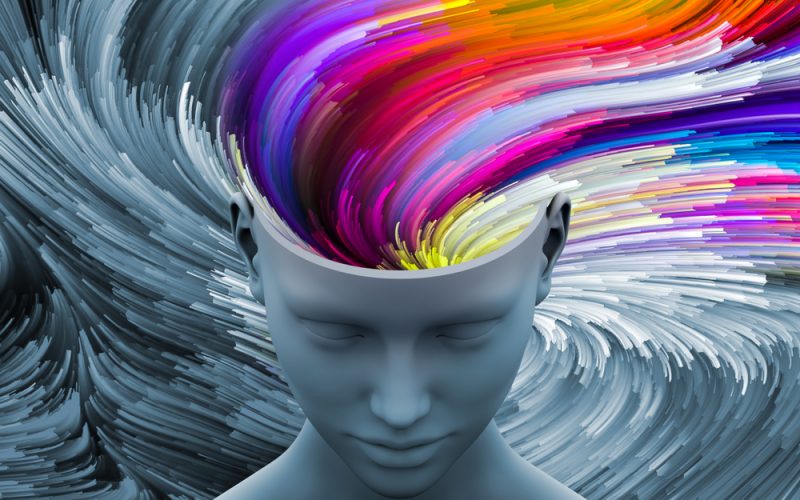Arshad Mahmood Awan
Mao Zedong, the founding father of the People’s Republic of China, was a deeply influential political leader whose ideas reshaped China in the 20th century. His quotations reflect his thoughts on various aspects of revolutionary theory, political strategy, and societal transformation. Below is a critical exploration of some of Mao’s key ideas based on his quotations.
1. The Communist Party
Mao viewed the Communist Party as the vanguard of the proletariat, tasked with leading the masses toward the ultimate goal of socialism and communism. He emphasized its role in revolution and in guiding the people through their struggles. Mao believed the Party should be a “unified and disciplined force,” crucial for organizing society under the leadership of the working class. This ideal, however, sometimes led to authoritarian practices, as seen in the Cultural Revolution, where internal dissent within the Party was harshly suppressed.
2. Classes and Class Struggle
Mao’s concept of class struggle was central to his thought. He believed that revolution was necessary to overthrow the capitalist class, and that even under socialism, class struggle would continue until a true communist society was realized. While his focus on the peasantry as a revolutionary force (as opposed to the urban proletariat, which was emphasized by Marx) reflected the unique Chinese context, it also led to policies that were at times overly simplistic and repressive, such as the class-based categorization during the Cultural Revolution.
3. Socialism and Communism
Mao’s view of socialism was deeply practical and often divergent from the orthodox Marxist theory. He focused on the importance of building socialism in a largely agrarian society like China, advocating for rural development and collectivization. His definition of communism was a society where “from each according to his ability, to each according to his needs,” but the leap from socialism to communism was complicated by the social and economic realities of China during his era.
4. The Correct Handling of Contradictions among the People
Mao’s emphasis on contradictions—whether between classes or within the people—highlighted his belief in resolving conflicts through ideological struggle. His approach was to distinguish between “antagonistic contradictions” (those between enemies like the capitalists and the working class) and “non-antagonistic contradictions” (those within the people, which could be resolved through dialogue and debate). This idea led to extensive campaigns, but it also provided a justification for authoritarian measures when those deemed “reactionaries” were targeted.
5. War and Peace
Mao is often remembered for his strategic thinking regarding warfare. He advocated for “people’s war,” which emphasized the importance of popular support in defeating imperialist or reactionary forces. While his ideas proved effective in the Chinese Revolution, particularly in the defeat of the Nationalists and Japanese invaders, his emphasis on continuous revolutionary warfare also fostered instability and was sometimes used to justify prolonged struggles, even when the conditions for peace had evolved.
6. Imperialism and All Reactionaries are Paper Tigers
Mao’s declaration that “imperialism and all reactionaries are paper tigers” reflects his belief in the inherent weakness of capitalist powers. He believed that imperialism, despite its military and economic power, would eventually crumble before the force of revolutionary movements. While this optimistic view helped inspire global anti-imperialist struggles, it also led to underestimating the strategic importance of diplomacy and practical international relations.
7. Dare to Struggle and Dare to Win
This slogan encapsulated Mao’s revolutionary spirit. He encouraged people to challenge the status quo and to be bold in their efforts to achieve revolutionary change. While the slogan energized many during the early revolutionary years, its application sometimes resulted in disastrous policies, such as the Great Leap Forward, where a “daring” spirit led to catastrophic economic and social consequences.
8. People’s War
Mao’s concept of “People’s War” was a theory of revolutionary warfare that relied on the mobilization of the masses. This strategy, which involved guerrilla tactics, was successful in China, especially against the Japanese and later the Nationalists. However, it also led to protracted periods of conflict and instability, and Mao’s focus on armed struggle sometimes overshadowed opportunities for peaceful resolutions.
9. The People’s Army
Mao’s conception of the People’s Army was that it should be rooted in the people, with soldiers drawn from the peasantry and bound to the masses through ideological training. This emphasis on political education helped foster loyalty within the army, but it also encouraged the militarization of society, especially during times of political upheaval like the Cultural Revolution.
10. Leadership and Party Committees
Mao placed great emphasis on collective leadership within the Party. However, he also believed in the centralization of authority in the hands of the Party’s top leaders. This contradiction led to the erosion of democratic structures within the Party, with Mao himself becoming an almost omnipotent figure. Leadership was often characterized by personal loyalty, resulting in authoritarian practices.
11. The Mass Line
The Mass Line was one of Mao’s central strategies for revolution, focusing on the idea that the Party must link with the masses, listen to their needs, and then guide them towards revolutionary goals. While this approach helped to maintain popular support during times of struggle, it also led to manipulative practices where the “will of the masses” was often interpreted in ways that aligned with Party agendas.
12. Political Work
Mao viewed political work as fundamental to the success of the Party and the revolution. Political education, ideological training, and mass mobilization were key components. However, political work under Mao often became a tool for control, leading to the suppression of dissent and the creation of an atmosphere of ideological conformity.
13. Relations between Officers and Men
Mao believed in the importance of maintaining strong relationships between the leadership and the rank-and-file soldiers. He advocated for mutual respect, with officers having a responsibility to care for the welfare of their men. However, in practice, the centralization of power and the politicization of military structures sometimes led to inefficiencies and authoritarian tendencies.
14. Relations between the Army and the People
The connection between the army and the people was a cornerstone of Mao’s strategy. He viewed the army not as an external force but as an integral part of the broader revolutionary movement. This relationship was vital during the Chinese Revolution but became strained in the aftermath, as military and political control became increasingly centralized.
15. Democracy and the Tree Main Fields
Mao’s views on democracy were complex. He supported a form of democratic centralism, where the people could voice opinions, but ultimate decisions rested with the Party leadership. This framework limited political freedoms, especially during periods of political campaigns like the Anti-Rightist Movement.
16. Education and the Training of Troops
Mao emphasized the importance of education and ideological training, particularly for soldiers and cadres. This approach helped instill a sense of loyalty and purpose, but it also fostered dogmatism and hindered critical thinking, especially during the Cultural Revolution when intellectuals were persecuted.
17. Serving the People
Mao’s famous slogan, “Serve the people,” was an essential part of his appeal. It resonated with the masses, and he sought to align Party policy with the needs of the people. However, in practice, serving the people often meant controlling and suppressing opposition, which led to widespread suffering, particularly during the Great Leap Forward.
18. Patriotism and Internationalism
Mao’s patriotism was rooted in his desire for China to assert its sovereignty and independence from imperialist powers. However, he also saw his revolution as part of a larger international struggle, advocating for the solidarity of oppressed peoples worldwide. His internationalism, while admirable in its anti-imperialist stance, sometimes led to an overemphasis on revolutionary fervor at the expense of pragmatic diplomacy.
19. Revolutionary Heroism
Mao idealized revolutionary heroism, often portraying revolutionaries as self-sacrificing and committed to the cause. This emphasis led to the cultivation of a heroic culture, but it also led to unrealistic expectations and sometimes reckless behavior, as seen in the Cultural Revolution.
20. Building Our Country through Diligence and Frugality
Mao’s calls for frugality were tied to his vision of creating a self-reliant, resourceful nation. While this encouraged hard work and national pride, it sometimes led to misguided austerity measures that harmed the economy and reduced living standards.
21. Self-reliance and Arduous Struggle
Mao’s emphasis on self-reliance was seen as a way to empower China to stand on its own in the face of external pressures. However, the policy often led to isolation and unnecessary hardships for the people.
Pl, watch the video and subscribe to the YouTube channel of republicpolicy.com
22. Methods of Thinking and Methods of Work
Mao believed in the importance of dialectical thinking, focusing on contradictions and their resolution. While his methods encouraged revolutionary zeal, they also led to ideological rigidity and an overreliance on theoretical purity, often at the expense of practical, flexible solutions.
23. Investigation and Study
Mao’s call for investigation and study reflected his desire for practical knowledge and grassroots understanding. However, in practice, this sometimes resulted in ideologically driven investigations that ignored complex realities.
24. Correcting Mistaken Ideas
Mao’s campaigns to “correct mistaken ideas” were often used as pretexts for political purges, particularly during the Cultural Revolution. These campaigns contributed to widespread fear and repression.
25. Unity
Mao stressed the importance of unity, but this unity was often enforced through coercion rather than consensus, leading to an atmosphere of suppression rather than cooperation.
26. Discipline
Discipline within the Party and the army was key to Mao’s vision of a well-ordered revolutionary movement. However, strict discipline often meant stifling individual freedom and dissent.
27. Criticism and Self-Criticism
Mao encouraged criticism and self-criticism as tools for personal and organizational growth. However, this practice was often manipulated to enforce conformity and silence opposition.
28. Communists
Mao viewed communists as ideological leaders, dedicated to the cause of revolution. Yet, his definition of communism often led to a rigid, dogmatic framework that suppressed alternative views.
29. Cadres
Mao’s focus on cadres—Party officials and workers—was essential to maintaining the Party’s leadership. However, it also resulted in a hierarchical system that sometimes prioritized loyalty over competence.
30. Youth
Mao placed great emphasis on the role of youth in revolution. However, the mobilization of youth during the Cultural Revolution often led to violence and chaos, undermining the very values Mao sought to promote.
31. Women
Mao’s advocacy for women’s rights was progressive for its time, but the practical implementation often lagged behind, especially as traditional gender roles persisted in many parts of China.
32. Culture and Art
Mao saw culture and art as tools for political education. However, during the Cultural Revolution, the arts were heavily censored, and many artists were persecuted for producing work deemed counter-revolutionary.
33. Study
Mao emphasized the importance of study as part of revolutionary discipline. While this led to a highly educated cadre, it also fostered a culture of ideological uniformity, often at the expense of innovation.
In conclusion, Mao Zedong’s quotations reflect the complexity and contradictions of his thought. While some of his ideas were progressive and revolutionary, others led to repressive policies that caused widespread harm to Chinese society. His legacy is marked by both transformative achievements and catastrophic failures, and his ideas continue to be debated and critiqued.















